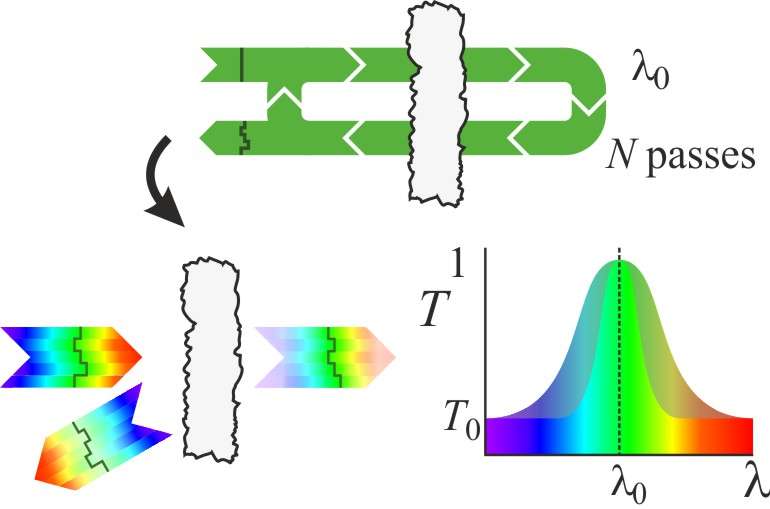Researchers find path for light through opaque materials

Shining a light through opaque materials seems impossible. And yet, researchers at the Debye Institute for Nanomaterials Science (Utrecht University) and the University of Twente have managed to increase the transmission of light through an opaque material by shining it along special paths. This could lead to a better understanding of the transport of light through materials such as skin. The researchers published their results in the prestigious journal Optics Express on 7 November, 2016.
Light diffusion is a phenomenon that occurs when light waves come into contact with an uneven surface or in an object with an inhomogeneous structure. This diffusion makes it impossible to see through skin, paper or clouds, for example. These materials are largely opaque, and only a small percentage of the light can penetrate through them. And yet these materials do have open channels, special paths through the material that the light waves can follow, no matter how thick the material is. Utrecht Ph.D. student Jeroen Bosch has located these open channels to send much more light through an opaque material.
Ping pong with light
In order to discover precisely how the light should be projected on the material, the researchers "played ping pong" with the light. "We send the light through the material in a random manner, and then we use data about the scattering of the light to send it along the same path in a slightly different manner," Bosch explains. "That way, more light passes through the material." By repeating the process several times – sending the light back and forth through the material – the researchers discovered what shape the light wave must have in order to make its way through the material.
All colours are different
The shape of the wave front – the front edge of the light wave – determines the degree to which the light can penetrate through the material. And the optimal shape of the wave front is different for every colour of light. "The principle works for all wavelengths, but for each wavelength, there is only a single shape of wave front that works," says Bosch. "If you fix the shape of the wave front and then change the wavelength, you see that less and less light penetrates through the material."
This knowledge of wavelength dependency of open channels provides the researchers with a measurement for the 'path length' of these open channels. How long does the light travel along such a special path? The answer to this question provides insight into the transport of light through diffusive materials, which is extremely useful for looking into and through such materials.
More information: Jeroen Bosch et al. Frequency width of open channels in multiple scattering media, Optics Express (2016). DOI: 10.1364/OE.24.026472
Journal information: Optics Express
Provided by Utrecht University Faculty of Science





















